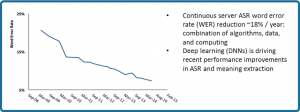By Yves Caseau
However, warnings started to be heard not late after Gartner re-introduced this idea in 2014. If taken literally, it may be seen as an excuse not to change the legacy, which would be wrong  according to the previous section and according to Jason Bloomberg. In his article “Bimodal IT: Gartner recipe for disaster”, he proposed a caricatured version (slow versus fast IT) which he rightly criticizes. He makes a thoroughly correct argument that the digital revolution need to embrace the whole information system. In a more recent post entitled “Saying goodbye to bimodal IT”, Mark Campbell makes a harsh criticism about keeping the legacy untouched and mostly against a silo culture that will prevent global change. Change and new capabilities are indeed required everywhere; I will return to this point in the next two sections.
according to the previous section and according to Jason Bloomberg. In his article “Bimodal IT: Gartner recipe for disaster”, he proposed a caricatured version (slow versus fast IT) which he rightly criticizes. He makes a thoroughly correct argument that the digital revolution need to embrace the whole information system. In a more recent post entitled “Saying goodbye to bimodal IT”, Mark Campbell makes a harsh criticism about keeping the legacy untouched and mostly against a silo culture that will prevent global change. Change and new capabilities are indeed required everywhere; I will return to this point in the next two sections.
This being said, I still believe that “bi-modal” is necessary because of speed requirement (back to the “rate of change” topic of the previous section). Everything mentioned in this section requires speedy transformation: the speed to adapt to a new open-source culture, the speed to adopt new software factory tools, the speed to learn how to play the API game. All these changes are mandates for the whole information systems, but if there is one common rate of change, it is mechanically too slow, because of the weight of legacy.
Read the entire article at http://informationsystemsbiology.blogspot.com/2016/05/exponential-information-systems.html



